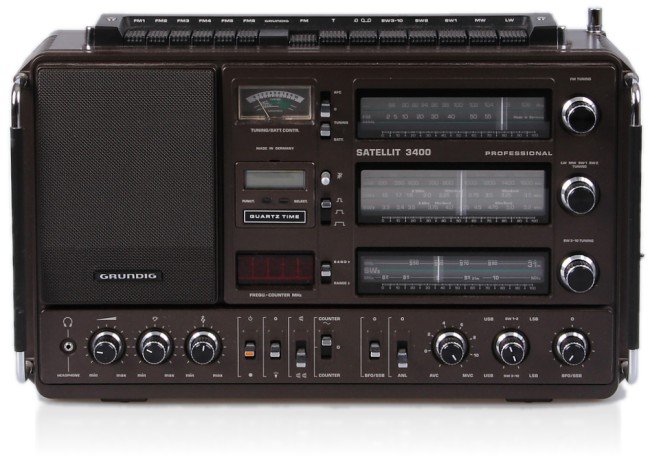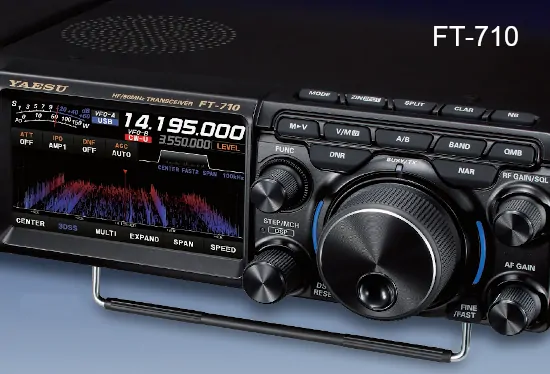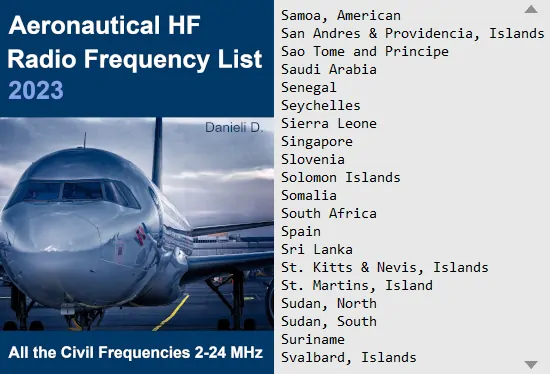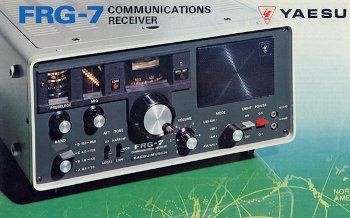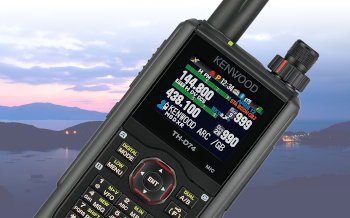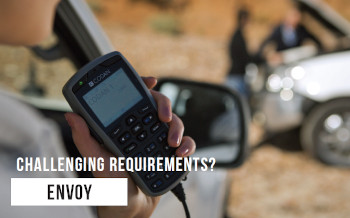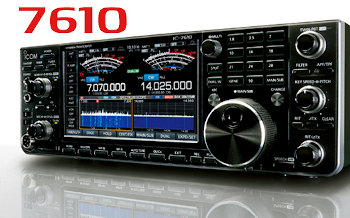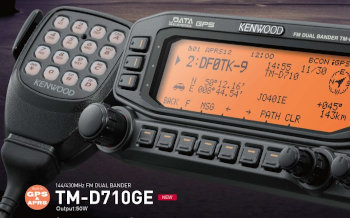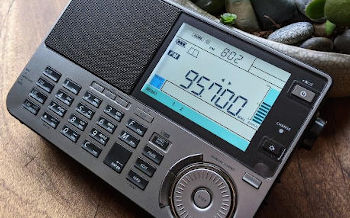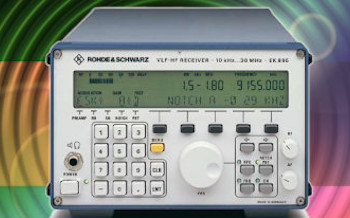DUBUS 2023
DUBUS 4-2023 Vol-52
- Editorial.
- Get Atmospheric Attenuation and Noise Figure from a Skyprofile
by Joachim Koppen, DF3GJ, team of DL0SHF
Above about 20 GHz, the attenuation by the Earth atmosphere becomes an important parameter in the EME link budget. It is possible to take the attenuation predicted for the average atmosphere, but this remains an estimation, and may appreciably differ from the actual atmospheric conditions above the station. Measuring the noise level of the empty sky at several elevations allows us to determine not only the actual attenuation but also the NF of the receiving system ... [The method | Example at 24 GHz | Example at 1.3 GHz]. - Designing, Building and Testing Feeds for Offset Dishes
by Charlie Suckling, DL3WDG
Offset dishes are becoming more popular for EME, but usually do not come with a suitable feed antenna. If purchased new, a dish will at best come with an LNB, and if obtained surplus probably with no feed at all ... [Feedhorn design using HDL_ANT | Construction method | Step by step construction | 2.3, 3.4, 5.7 and 10 GHz versions | RF evaluation]. - The Evolution of Accuracy in Antenna Modelling with EZNEC: From NEC-2 to NEC-5
by Justin Johnson, G0KSC
In this article, we delve into the nuances of the antenna software modelling toolkit, EZNEC, its iterations, and the calculation engines that power it. Our focal point will be the advancements and remediations that have eliminitad previous glitches and errors, hampering the precision within specific antenna models ... [Understanding the limitations of NEC-2 | NEC-4 enhanced ground effect modelling | NEC-5 | EZNEC version 7 | Application examples]. - Ionoscatter by Mesospheric Summer Echoes (MSE): A new annual DX season for 144 MHz stations
by Tim J. Fern, G4LOH
The summer of 2023 saw some impressive ionoscatter openings on 144 MHz, this was extremely unusual with many single yagi station involved. Ionoscatter at 144 MHz had generally been understood as an exotic propagation mode, sometimes available, anywhere, but only between the largest EME-capable stations ... [IFS and MSE | Earth's atmospere | Ionoscatter in the D-layer | Practical experiences | Protocol for MSE]. - European EME Contest 2024.
- European EME Contest 2023, comments.
- Microwave Europe.
- Microwave Spain and Portugal.
- A DXpedition for the highest frequencies.
- Microwave North America.
- Microwave Japan.
- Tropo Reports.
- SV8/OE2UKL expedition to Lefkada Island.
- Aurora News.
- FAI News.
- 2m Transequatorial QSOs from EU to ZS.
- 6m & 4m News.
- Editorial.
- How to Measure the Width of a Narrow Antenna Beam
by Joachim Koppen, DF3GJ, team of DL0SHF
The width of the main lobe of a paraboloidal antenna provides a direct measure of the antenna gain. While it is easy to measure it easily by the width of a drift scan across the Sun or the Moon, this method no longer works with the narrow beams of large dishes and higher frequencies, beacause one would only measure the angular diameter of the celestial body. Fortunately, the discs of both Sun and Moon have sharp outer edges, which the antenna beam smoothes out into wider rim profile. This article describes how we can use the width of the observed rim to determine the antenna beam width ... [The method | Why it is important to know the HPBW | Example at 10 GHz and 24 GHz]. - A Software Defined Receiver for the 30 THz Infrared Band
by Barry Chambers, G8AGN
The receiver to be described is intended for use with the binary phase-modulated 30 THz transmitter which was described in Dubus 20/2023 ... it consists of an analogue front-end, containing a PIR sensor and its integrated 5-14um band-pass filter, which is followed by a 24-bit ADC, a digital band-pass filter and a digital phase-sensitive demodulator ... [Components | Receiver antenna | Receiver software]. - Theoretical fundations of Quantum Amateur Radio: Defining the qQSO and introducing three quantum modes
by Pablo Alvarez Dominguez, EA1FID
Amateur Radio has always been known for bringing state-of-the-art telecommunications within amateurs' reach. With the emergence of quantum technologies, it must continue moving forward, and it is the responsibility of all operators to ensure that the quantum revolution is also brought to our hobby. Thus this article aims to lay the groundwork and fundations for this new era of Quantum Amateur Radio ... [Fundamentals | Quantum modes | Quantum superdense coding]. - Phase Noise Measurement Revisited
by Dennis G. Sweeney, WA4LPR
This paper describes two methods for measuring phase noise. The first is a direct method employing a spectrum analyzer controlled by a GPIB interface and software available from KE5FX. The second uses a PLL and a phase detector. If carefully implemented, this second method is capable of performance approaching that of commercial phase noise measurement system. In fact, it is similar to a number of commercial system. This paper covers the analysis needed to set up this PLL based measurement and some of the practical issues that must be addressed in order to obtain consistent accurate results ... [Direct method | Using a PLL | Measurement analysis | Math relations | The phase noise box circuit]. - Microwave Europe.
- Microwave Spain and Portugal.
- Microwave North America.
- Microwave Japan.
- Tropo Reports.
- 6m & 4m News.
- News & Comments
Contest, Expeditions, Beacons update, Comments.
- Editorial.
- Transverter Interface for Multiband IF Radios - like the IC-705, FT817/818, K2/3
by Goran Popovic, AD6IW
In this article a new interface is described that was developed for QRP transceivers like the Yaesu FT-817, Icom IC-705, Elecraft K2/3 and other similar radios. The output power of these is around 5W and this is much higher than we need to drive transverters. For linear low distortion operation ... [Gain and NF plot | Performance data | Circuit diagrams | PCB layout]. - Effective 50 MHz Triangle Stack
by Yutaka Tasaki, JR1LZK / JI1HCD, with Slobodan Bukvic, YU7XL, and Hartmut Kluver, DG7YBN
In the past several suggestions for triangle shaped VHF Yagi stacks have been proposed on the internet and in DUBUS. Often these do not make up for the ratio between how many Yagi-Uda antennas used and what gained against traditional two or four Yagis stacks ... [Geometry | Elevation and azimuth plots]. - Evaluation of the Effectiveness of JR1LZK / JI1HCD's 50 MHz Triangle Stack compared to a four Yagi Stack
by Hartmut Kluver, DG7YBN
In this article we evaulate the effectiveness of the triangle stack proposed by JR1LZK (see article above) when comparing to a standard stack in H-configuration, which is set up using distances derived from applying the DL6WU formula. For doing so, the key parameters are Antenna G/T at a given set of T-eart and T-sky as well as forward gain and ... [3D Radiation patterns | Antenna Temperature]. - EME with Narrow Beam Antennas
by Joachim Koppen, DF3GJ, and Gerald Ihninger, OE2IGL
EME with large parabolic antennas benefits from the higher gain, but is faced with the problem that tha antenna beam widths become comparable or even narrower than the disc of the Moon. In conseguence, the power of the reflected signal is lower than predicted ... This article explains how the correction factors are computed, a JavaScript tool to perform the calculations and display the results is available ... [Radar range equation | Illuminating factor | Beam width factor | Offset loss]. - Low-impedance Antennas with extreme high F/B Ratios, Part 2
by Matthias Hornsteiner, DG4MHM
The antennas presented in DUBUS 4/2022 are designed for an extremely high front-to-back ratio, characterized by broad sectors with ratios of more than 60 dB in the rearward part of the antenna diagram. However, computer-optimized designs oftentimes tend to implicate extremely small engineering tolerances, with the consequence that the design cannot be used in practice. Therefore, we would like to examine how strong the electrical properties of the antenna vary if the dimensions are not precisely met during the construction process ... [Comparison of antenna diagrams | Scaling of the antenna to the amateur radio bands]. - Sporadic-E Summary 2022 - 144 MHz
92 maps and comments for Europe/Asia, North America, Australia and New Zealand Es openings. - A binary-phase-modulated Transmitter for the 30 THz infrared Band
by Barry Chambers, G8AGN
My interest in using binary-phase modulation on the 30 THz infra-red band was aroused a few months ago by a YouTube video from Remi M0LRH, in which he demostrated such a infrared system operating over a distance of 75m. In a more recent video he show an improved system ... [Circuit | Building and testing the transmitter]. - Comparative measurements on some elevation sensors
by Harke Smits, PA0HRK
When I got a new 1.50m offset dish to be used on 24 GHz EME I realized that I also needed a very good elevation position sensor ... sensors at my disposal MAB25, HH12, HH12-INC, AccuStar, DXL360 ... [Set-up | Measurement results]. - Aurora Reports.
- Microwave North America.
- Microwave Japan.
- Microwave Europe.
- Microwave Spain and Portugal.
- 6m News.
- Tropo Reports.
- News & Comments
Contest, Expeditions, Beacons update, Comments.
- Editorial.
- Three Channel Digital T/R Sequencer
by Goran Popovic, AD6IW
A simple T/R sequencer design and ita implementation are presented in this article. Most T/R sequencers are based on analog designs or on programmed microcontrollers. Both approaches have a few issues. Analog sequencers during fast or inconsistent switching may cause a glitch. Microcontroller sequencers contain a clock which can stop working in the proximity of high level RF. This is not the case with the design presented here ... [Circuit diagrams | PCB layout]. - WeatherBox
by Barry Chambers, G8AGN
An Arduino-based system for real-time measurement of atmospheric data and the prediction of microwave propagation ... [Variation of atmospheric attenuation due to gases vs frequency | Hardware | Software]. - Results and Analysis of Attempt at Extending the 10 GHz Terrestrial World Record on the Hawaii-California Path
by Rex Moncur, VK7MO and Gary Lauterbach, K6MG
DUBUS Volume 2/2022 provided a planning document with the aim of extending the 10 GHz Terrestrial World Record from 2793 km between VK7MO and VK6DZ in Southern Australia to around 4000 km using the Hawaii-California path. The Hawaii-California path has provided all current microwave Terrestrial World records up to 5.7 GHz ... [List of Amateur microwave Terrestrial World records | Example of a duct from Radiosonde data | Site for Operations | Equipment]. - Switched bandwidth LC filter - Electronically controllable Q-factor
by Aljaz Blatnik
This article describes a 10 MHz LC band-pass filter whose bandwidth can be electronically adjusted by altering the resonant circuit's Q-factor. With very minor changes in component values, a similar approach can be used to create filters in the 1-50 MHz frequency range ... [Principle of operation | Circuit diagram | Construction | Measurements at different bandwidths]. - "El Burrito" (EB6) - a very simple FM/CW Transceiver for 6cm (5760 MHz)
by Werfried Kuneth, OE8FNK
The El Burrito transceiver is a really simple 6cm single-band FM/CW radio simplified for DIY with ready-made modules for VCO and control. The core of the development is a PCB with the SE2595L chip which is used for the frontend. For frequency generation a ready-made MAX2870 module is used ... [Block diagram | Circuit diagram | Assembly diagram | Modifications | Pratical experience in operation]. - Aim a Narrow Beam at the Moon
by Joachim Koppen, DF3GJ
EME communications above about 30 GHz need high gain antennas to provide adeguate transmission power as well as strong signals on reception. The associated antenna beams can be as narrow as to cover only a part of the lunar disc ... [Radio images of the Moon | Position of the Brightest Spot | The Orientation of the Moon | Checking your System]. - Q65-15C: A digital mode for Auroral Scatter
by Rex Moncur, VK7MO
The potential advantages of Q65-15C are the wide tone spacing of 26 Hz should minimise the impact of the random Aurora Doppler variations and the impact of this should be further reduced by shorter transmission period of 13 seconds ... [Exemples of decodes in sked type QSO]. - 144 MHz seamlessly phased 4 x 28 ohm Low Noise Yagi Stack
by Hartmut Kluver, DG7YBN
In this article we show a 28 ohm Yagi design with a radiation pattern that yields low noise, in particular for vertical stacks or whole phased arrays of such vertical stacks. These cover a wide azimuth angle as required by contest stations, Aurora or Meteor scatter operators. We also describe a straightforward way of symmetrising and phasing four 28 ohm Yagis to a summing point for a feed line of 50 ohm ... [Geometry | Pattern | Elevation plot | Coax length trimming]. - Microwave Europe.
- Microwave North America.
- Microwave Japan.
- Tropo Reports.
- Aurora Reports.
- Solar Cycle 25 Progress.
- 8, 6 and 4m News.
- REF / DUBUS European EME Contest 2022 - CW Results
- News & Comments
Expeditions, Beacons update, Comments.
Newsletter RadioMasterList.com
Thank you
